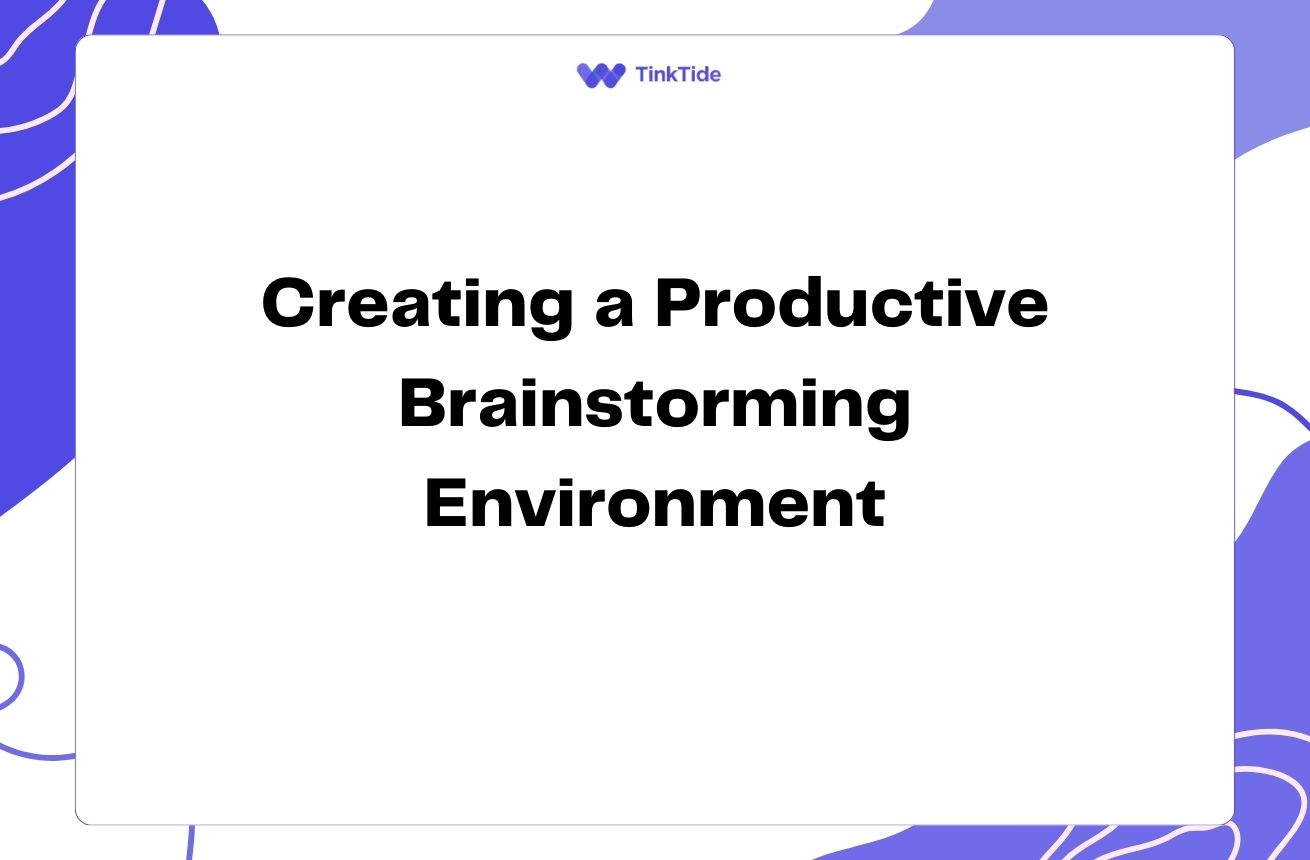Unlock Innovation with Reverse Brainstorming
What is Reverse Brainstorming?
Reverse brainstorming is a creative problem-solving technique that flips traditional brainstorming on its head. Instead of directly seeking solutions, you start by identifying ways to cause or worsen a problem. This counterintuitive approach can lead to innovative solutions by highlighting potential issues you might otherwise overlook.
The concept was popularized by MindTools and has since become a valuable tool in various industries. By focusing on what could go wrong, teams can uncover hidden vulnerabilities and develop more robust solutions.
Reverse brainstorming is particularly effective when dealing with complex problems or when traditional brainstorming sessions have hit a wall. It encourages participants to think differently and can lead to breakthrough ideas.
The Benefits of Reverse Brainstorming
Reverse brainstorming offers several advantages over conventional problem-solving methods:
- Identifies potential pitfalls and weaknesses in existing systems
- Encourages out-of-the-box thinking and creativity
- Helps overcome mental blocks and 'groupthink'
- Provides a fresh perspective on familiar problems
- Generates a wider range of potential solutions
When to Use Reverse Brainstorming
Reverse brainstorming can be applied in various scenarios, including:
1. Product Development: Identify potential flaws in a new product design by asking, 'How could we make this product fail?'
2. Customer Service: Improve customer experience by exploring 'How could we make our customers unhappy?'
3. Process Improvement: Optimize workflows by considering 'What would make this process as inefficient as possible?'
By examining these negative scenarios, teams can develop strategies to prevent problems and enhance overall performance.
The Reverse Brainstorming Process
Follow these steps to conduct an effective reverse brainstorming session:
- Step 1: Clearly define the problem or goal
- Step 2: Reverse the problem statement (e.g., 'How to improve sales' becomes 'How to decrease sales')
- Step 3: Brainstorm ideas for the reversed problem
- Step 4: Analyze and categorize the generated ideas
- Step 5: Reverse the negative ideas back into positive solutions
- Step 6: Evaluate and prioritize the potential solutions
Real-World Example: Improving Website User Experience
Let's apply reverse brainstorming to improve a website's user experience:
1. Original goal: Enhance website usability
2. Reversed problem: How can we make our website as difficult to use as possible?
3. Negative ideas: Confusing navigation, slow loading times, cluttered design
4. Positive solutions: Streamlined menu structure, optimized page speed, clean and intuitive layout
This approach can reveal overlooked issues and inspire creative solutions that might not have emerged through traditional brainstorming.
Tips for Successful Reverse Brainstorming
To get the most out of your reverse brainstorming sessions:
- Encourage a judgment-free environment where all ideas are welcome
- Use visual aids like mind maps or whiteboards to organize thoughts
- Set a time limit to maintain focus and energy
- Include diverse perspectives from different team members or departments
- Follow up with action plans to implement the best solutions
Combining Reverse Brainstorming with Other Techniques
Reverse brainstorming can be even more powerful when combined with other creative problem-solving methods. For example:
1. SCAMPER: Use the SCAMPER technique (Substitute, Combine, Adapt, Modify, Put to another use, Eliminate, Reverse) to further develop ideas generated through reverse brainstorming.
2. Six Thinking Hats: Apply Edward de Bono's Six Thinking Hats method to evaluate reverse brainstorming ideas from different perspectives.
3. Design Thinking: Incorporate reverse brainstorming into the ideation phase of the design thinking process to uncover potential user pain points and innovative solutions.
Common Questions About Reverse Brainstorming
Here are some frequently asked questions about reverse brainstorming:
How is reverse brainstorming different from traditional brainstorming?
Reverse brainstorming focuses on identifying ways to cause or worsen a problem, rather than directly seeking solutions. This approach can lead to more creative and comprehensive problem-solving by highlighting potential issues that might be overlooked in traditional brainstorming sessions.
Can reverse brainstorming be used for personal problem-solving?
Absolutely! Reverse brainstorming can be applied to personal challenges as well. For example, if you're trying to improve your time management, you could start by listing ways to waste time or be less productive. This can help you identify habits or behaviors you need to change.
How long should a reverse brainstorming session last?
A typical reverse brainstorming session can last anywhere from 30 minutes to an hour. However, the duration can vary depending on the complexity of the problem and the size of the group. It's important to maintain energy and focus, so consider breaking longer sessions into multiple shorter ones.
What if the team struggles to come up with negative ideas?
If the team is having trouble generating negative ideas, try using prompts or scenarios. For example, 'Imagine you're trying to sabotage this project. What would you do?' This can help shift perspectives and encourage more creative thinking.
How can we ensure that reverse brainstorming leads to actionable solutions?
After generating negative ideas, it's crucial to spend time reversing them into positive solutions. Prioritize the most impactful ideas and develop action plans for implementation. Consider using a decision matrix to evaluate potential solutions based on criteria such as feasibility, cost, and potential impact.
Additional Resources
MindTools: Reverse Brainstorming
A comprehensive guide to reverse brainstorming techniques
Harvard Business Review: Creativity in Advertising
Insights on applying creative techniques like reverse brainstorming in advertising
IDEO U: Brainstorming Methods
Various brainstorming techniques, including reverse brainstorming, from the innovation experts at IDEO
Creativity Tools: Reverse Brainstorming
Additional tips and examples for effective reverse brainstorming sessions
The Interaction Design Foundation: Problem-Solving Techniques
An overview of various ideation methods, including reverse brainstorming
Embrace the Power of Reverse Thinking
Reverse brainstorming is a powerful tool for uncovering hidden problems and generating innovative solutions. By approaching challenges from a different angle, teams can break through mental barriers and develop more comprehensive strategies.
Remember that the key to successful reverse brainstorming lies in creating an open, judgment-free environment where all ideas are welcome. Encourage your team to think creatively and embrace the counterintuitive nature of this technique.
Start incorporating reverse brainstorming into your problem-solving toolkit today, and watch as your team uncovers new insights and develops more robust solutions to complex challenges.
Revolutionize Your Problem-Solving Approach
Ready to unlock innovative solutions? Try our problem-solving tools and take your team's creativity to the next level.
Start Your Free Trial

